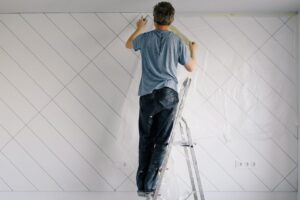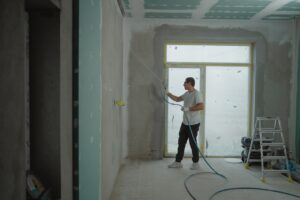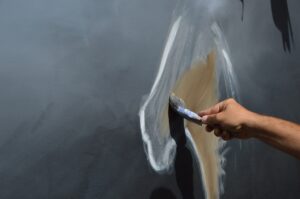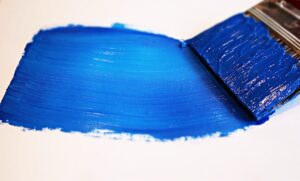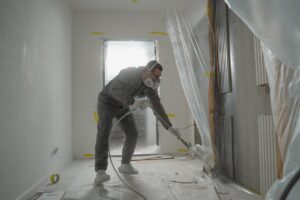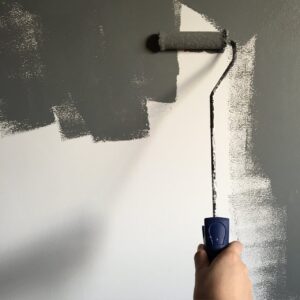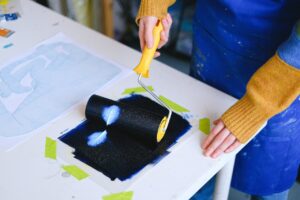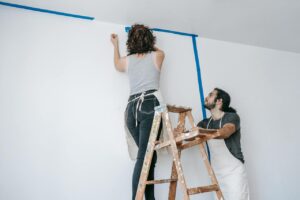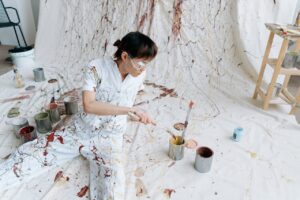
Creating a Unique Exterior: Textured Paints for Outdoor Use
Did you know that adding texture to your exterior walls can completely transform the look of your outdoor spaces? With the help of textured paints, you can achieve a unique and visually appealing aesthetic that will make your home stand out. But it’s not just about appearance – textured paints also offer practical benefits. They provide full coverage, making them ideal for hiding imperfections and giving your walls a fresh coat of protection. Plus, their slip-resistant properties make them perfect for areas like patios or walkways. So let’s dive in and discover how these innovative products can help you design an extraordinary space that truly reflects your style and personality. Exploring Textured Paints for Outdoor Spaces Textured paints are specifically designed to withstand the harsh conditions of outdoor environments, making them an excellent choice for enhancing the exterior of your home or outdoor space. These paints offer a wide range of textures, allowing you to create a unique and visually appealing look that suits your design preferences. Specially Formulated for Durability Textured paints are formulated with durability in mind, ensuring they can withstand the elements and maintain their appearance over time. Whether it’s exposure to sunlight, rain, or temperature fluctuations, these paints are engineered to hold up against the toughest outdoor conditions. By using textured paints on your exterior surfaces, you can ensure long-lasting protection while adding an extra layer of visual interest. A Variety of Textures to Choose From One of the key advantages of textured paints is the ability to choose from a diverse range of textures. Whether you prefer a smooth finish or a rougher texture, there is a type of textured paint that will suit your style. From fine sand-like finishes to more pronounced patterns, these paints offer endless possibilities for creating a unique aesthetic for your outdoor spaces. Enhancing Your Outdoor Spaces By utilizing textured paints in your exterior painting projects, you can transform ordinary surfaces into focal points that enhance the overall appeal of your outdoor spaces. For example, applying textured paint on walls or fences can add depth and dimension while simultaneously hiding imperfections. Using textured paint on features like pillars or decorative elements can create eye-catching accents that elevate the visual impact of your outdoor areas. Incorporating textured paints into your exterior design allows you to unleash creativity and bring personality to your outdoor spaces. Preparing Surfaces for Textured Paint Application Proper surface preparation is crucial. By following the right steps, you can ensure a long-lasting and durable finish that will enhance the beauty of your outdoor spaces. Cleaning, Repairing, and Priming the Surface Before applying textured paint, it’s essential to clean the surface thoroughly. Remove any dirt, dust, or loose particles using a brush or a damp cloth. This helps in achieving better adhesion of the paint and ensures a smooth application. If there are any cracks or damaged areas on the surface, make sure to repair them before proceeding further. Fill in cracks with an appropriate filler or patching compound and smoothen them out using sandpaper. This step is crucial as it prevents moisture from seeping into the surface and causing further damage. Once the surface is clean and repaired, it’s time to prime it. Applying a primer creates a strong bond between the surface and the textured paint. Choose a primer that is suitable for your specific textured finish and follow the manufacturer’s instructions for application. Step-by-Step Process of Surface Preparation Clean the surface thoroughly using a brush or damp cloth. Repair any cracks or damaged areas on the surface with an appropriate filler. Smooth out repaired areas using sandpaper. Apply primer to create a strong bond between the surface and paint. Follow manufacturer’s instructions for drying time before applying textured paint. By following these steps, you can ensure that your surfaces are properly prepared for textured paint application. This will result in an enhanced and long-lasting finish that adds texture and visual appeal to your outdoor spaces. https://youtu.be/SK8EsyEG0_Q?si=3eHNPVFb6bUZKc_v Top Texture Designs for Exterior Walls Brick patterns can add a rustic charm to your outdoor walls. The textured surface of brick gives depth and character to the exterior, creating a unique and visually appealing look. Whether you choose a traditional red brick or opt for more modern variations like white or gray, the masonry texture adds warmth and authenticity to your home. Stucco textures provide a classic and elegant look that complements various architectural styles. The smooth yet subtly textured finish creates a sophisticated appearance that can enhance the overall aesthetics of your exterior walls. Stucco is also known for its durability, making it an excellent choice for long-lasting protection against weather elements. Stone-inspired textures can give your exterior walls a natural and timeless appeal. With their rough, uneven surfaces, stone textures create an organic look reminiscent of nature’s beauty. Whether you prefer the rugged elegance of stacked stones or the sleekness of river rocks, incorporating stone-inspired textures into your exterior design can elevate your home’s curb appeal. Consider factors such as durability, weather resistance, and maintenance requirements. Look for products specifically designed for exteriors to ensure longevity and optimal performance in different climates. Creative Techniques for Adding Texture Sponging Technique: Soft and Mottled Texture The sponging technique is a popular choice for creating a unique exterior with textured paints. By using a natural sea sponge or a synthetic sponge, you can achieve a soft and mottled texture on the walls. Dip the sponge into the paint, then gently press it onto the surface in a random pattern. This technique adds depth and visual interest to your outdoor space. Knockdown Technique: Depth and Visual Interest If you’re looking to add more depth to your exterior walls, consider the knockdown technique. This technique involves applying textured paint with a roller or sprayer, then partially flattening it with a trowel or spatula. The result is a visually appealing texture that adds character to your outdoor area. Custom Patterns and Designs with Trowel or Spatula For those who want to get

